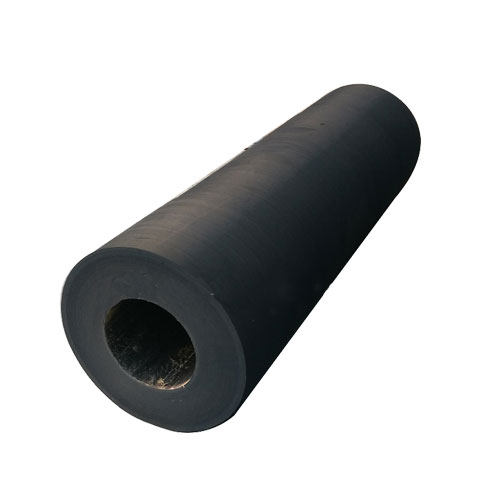What are Rubber Fenders
Rubber fenders play a crucial role in ensuring safety and protection in the marine industry, as well as in various industrial and commercial applications. They are primarily used to safeguard boats, structures, and employees from the impacts associated with berthing and mooring.
Vessel Protection
One of the key reasons why rubber fenders are essential is their ability to act as a protective barrier between vessels and hard surfaces, such as piers or other vessels. By providing a cushioning effect, they help maintain the integrity of both the vessel and the surface it comes in contact with.
Personnel Safety
Rubber fenders offer a cushioning effect that plays a vital role in safeguarding employees in the event of accidents or impacts. This cushioning effect minimizes the risk of injuries and ensures the well-being of personnel working in marine environments.
Durability
Rubber fenders are renowned for their exceptional durability and resilience in harsh marine environments. They can withstand the challenging conditions presented by saltwater, constant exposure to waves and weather, and the constant berthing and mooring of vessels. Their durability makes them a reliable choice for long-term vessel protection.
Cost-effectiveness
In terms of cost-effectiveness, rubber fenders are a preferred option for vessel protection. They require less maintenance compared to other types of fenders and are less prone to damage. This translates into reduced maintenance costs and longer service life, providing an economical solution for marine applications.
Versatility
Rubber fenders come in various shapes and sizes, offering versatility in their application. This adaptability allows them to be used in a wide range of marine scenarios and applications, making them highly versatile and suitable for different vessels and structures.

Types of Rubber Fenders commonly used
Different types of rubber fenders have their own advantages and are applied based on specific requirements.
Solid Rubber Fenders
Solid rubber fenders are widely used due to their durability, robustness, and resistance to wear and tear. They are suitable for various marine applications, including berthing and mooring, providing reliable protection for vessels and structures.
Pneumatic Rubber Fenders
Pneumatic rubber fenders find extensive use in the offshore industry. They have the ability to absorb large amounts of energy, making them highly effective in protecting vessels and offshore structures from accidents and impacts.

Cone Rubber Fenders
Cone rubber fenders are commonly employed in high-energy applications, such as protecting offshore platforms or serving as a buffer for a ship's bow. Their unique shape allows them to handle high impact energies effectively.
Foam Rubber Fenders
Foam rubber fenders are lightweight and excellent at absorbing stress. They are typically utilized in smaller applications, such as recreational boats, where their properties are well-suited for the specific requirements.
Factors to Consider for Selection and Design of Rubber Fenders
Choosing the right type of rubber fender involves considering various factors related to the vessel, the environment, and the expected impact energy. These factors include:
Energy Absorption
The fender's ability to absorb energy is critical in determining its effectiveness. Factors such as type, size, and shape influence the amount of energy a fender can absorb.
Reaction Force
The reaction force of a fender refers to the force it exerts on a vessel or structure during an impact. Balancing this force is crucial to protect the vessel or structure while avoiding damage to the fender.
Type of Vessel
The type and size of the vessel play a significant role in selecting the appropriate fender. Considerations such as weight, speed, and draught of the vessel help determine the most suitable fender type.

Environmental Factors
Environmental conditions, including wind, waves, and water levels, must be taken into account when selecting a fender. These factors can influence the performance and effectiveness of the fender in its specific application.
By carefully considering these factors, marine industry professionals can select and design the appropriate type of rubber fender to meet their specific requirements.
Maintenance of Rubber Fenders
To ensure the continued effectiveness and longevity of rubber fenders, proper maintenance is essential. Here are some maintenance tips:
Regular Inspection
Regularly inspect the fenders for any signs of wear and tear, such as cracks, punctures, or deformations. Additionally, check the chain and shackles that connect the fenders to the vessel or structure for signs of damage.
Cleaning
Regularly clean the fenders to remove accumulated dirt, grime, and debris. Use a mild soap or detergent along with a gentle brush or cloth to avoid damaging the rubber surface.
Lubrication
Lubricate the chain and shackles with an appropriate lubricant to prevent corrosion and ensure smooth operation.
By following these maintenance practices, rubber fenders can maintain their effectiveness, prolong their lifespan, and continue to provide reliable protection in marine environments.
- Art
- Causes
- Crafts
- Dance
- Drinks
- Film
- Fitness
- Food
- Giochi
- Gardening
- Health
- Home
- Literature
- Music
- Networking
- Altre informazioni
- Party
- Religion
- Shopping
- Sports
- Theater
- Wellness


